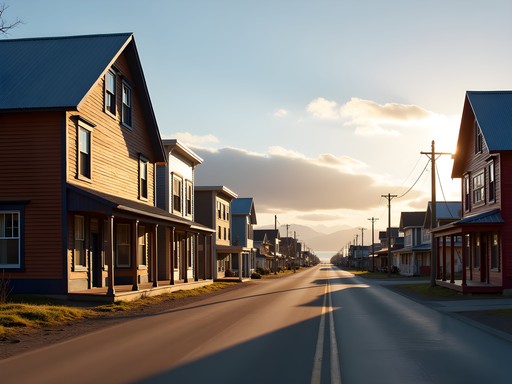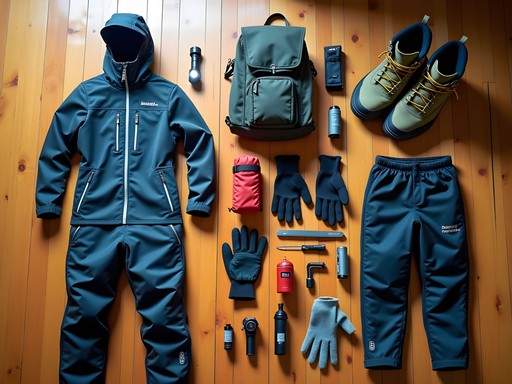Disclosure: This article contains affiliate links. We may earn a commission from purchases at no extra cost to you, which helps our travel content.
Standing on the gravel airstrip as the Cessna 208 disappeared into the vast Alaskan sky, I felt that familiar mixture of isolation and freedom that only Nome delivers. As someone who routinely travels to remote communities for maternal healthcare work, I've developed an intimate relationship with this rugged outpost on the Bering Sea. Nome no es fácil – Nome isn't easy – but that's precisely what makes it extraordinary. The gold rush town where the Iditarod ends represents one of America's last true frontiers, demanding respect and preparation from those who venture here. Let me guide you through navigating this remarkable corner of Alaska, where transportation isn't just about getting from point A to B – it's about survival, connection, and experiencing the raw beauty of the Last Frontier.
Getting to Nome: The Art of the Bush Plane
Nome exists in splendid isolation – no roads connect it to Alaska's main highway system. Your journey begins with a commercial flight to Anchorage, followed by a smaller Alaska Airlines jet to Nome's airport. But the real adventure starts when you venture beyond town.
During my recent medical mission to surrounding villages, I chartered a bush plane through Bering Air, an experience that merges necessity with breathtaking beauty. These small aircraft – typically 5-10 seaters – are Nome's lifeline, delivering everything from medical supplies to groceries across the region.
Prepare for weight restrictions that make international airlines seem generous. On my last trip, I carefully packed my medical supply organizer to maximize every ounce of my 50-pound allowance. The pilots weigh everything, including passengers – this isn't about vanity but vital flight calculations.
The views compensate for any discomfort: sweeping tundra, braided rivers, and occasional wildlife sightings from a perspective few ever witness. When booking, request a window seat and bring a polarized sunglasses to cut the intense glare reflecting off snow and water while enhancing those incredible aerial views.

💡 Pro Tips
- Book bush flights at least 3-4 weeks in advance during summer
- Expect flight changes due to weather – flexibility is essential
- Bring motion sickness medication even if you don't normally need it
Navigating Nome's Unique Road System
Nome has exactly three roads leading out of town, locally known as the Nome-Council Road, the Kougarok Road, and the Teller Road – each stretching roughly 70-85 miles before simply ending in wilderness. These unpaved lifelines offer some of Alaska's most spectacular self-drive adventures, but demand proper preparation.
Renting a vehicle in Nome requires advance planning. I reserved my satellite phone weeks before arriving – an absolute necessity when traveling these roads, as cellular coverage disappears minutes outside town. During my June trip assessing healthcare needs in outlying communities, I rented a rugged SUV from Nome-based Arctic Rental, one of only two rental companies in town.
The roads transform dramatically with the seasons. Summer brings relatively accessible driving but watch for washouts after rain. What appears as a puddle might conceal a axle-breaking pothole. I learned this lesson on my first visit when our vehicle required an expensive tow back to Nome.
Before heading out, I always stop at the Nome Visitor Center for current road conditions and to register my travel plans. Pack as if preparing for an overnight emergency, because in this environment, that's always a possibility. My emergency shelter has accompanied me on every excursion – ultralight insurance against Nome's notoriously fickle weather.

💡 Pro Tips
- Fill your gas tank completely – there are no services outside Nome
- Pack extra water, food and warm clothing regardless of season
- Download offline maps as there's no cell service beyond town limits
Winter Transportation: Fat Bikes to Dog Sleds
My work often brings me to Nome during its dramatic winter season, when transportation options transform entirely. The frozen landscape enables unique travel methods while making familiar ones more challenging.
During my February visit supporting a prenatal care initiative, I experienced firsthand how Nome residents navigate their snow-covered world. Fat bikes – those mountain bikes with ultra-wide tires – have become increasingly popular for local transportation. I rented one from Nome's Outdoor Recreation Center and found it surprisingly effective on packed snow trails. For serious winter exploration, consider investing in quality winter boots rated to at least -40°F – your standard hiking boots won't suffice in Nome's extreme conditions.
Snowmobiles (called snowmachines locally) are Nome's winter workhorses. Locals use established snowmachine highways that connect communities when sea ice creates winter bridges impossible during summer. As a visitor, you can arrange guided snowmobile tours through operators like Nome Adventure Tours.
Perhaps most iconic is dog mushing – not just during the famous Iditarod finish in March, but as practical transportation. My most memorable Nome experience was accompanying a local midwife via dog team to check on an expectant mother in a homestead 15 miles outside town. The silence, broken only by runners gliding over snow and rhythmic dog panting, offered a profound connection to this landscape that no motorized transport could match.

💡 Pro Tips
- Dress in proper Arctic layers – cotton kills in this environment
- Learn basic cold weather survival skills before winter visits
- Respect local knowledge about ice conditions and weather patterns
Marine Transportation: The Bering Sea Connection
Nome's position on the Bering Sea opens unique maritime transportation possibilities during ice-free months. Unlike Southeast Alaska's comprehensive ferry system, Nome receives limited scheduled marine service, but the options available offer unparalleled adventures.
During my summer healthcare assessment trip, I coordinated with a local fishing boat operator to reach a coastal village inaccessible by road. These informal water taxis provide essential connections between communities while offering visitors extraordinary wildlife viewing opportunities. On that six-hour journey, we encountered seals, countless seabirds, and briefly, a pod of beluga whales.
For those seeking structured experiences, operators like Norton Sound Charters offer day trips along the coast. I recommend bringing a waterproof dry bag to protect cameras and essential gear – Bering Sea spray is inevitable and unforgiving to electronics.
Nome's port also receives cargo barges and occasional cruise ships during summer. The arrival of the first barge after winter ice retreat is a community celebration, bringing fresh produce and supplies unavailable during winter months.
For the truly adventurous with wilderness medical training, sea kayaking presents an extraordinary way to experience this coastline. I brought my marine radio when kayaking with local guides – an essential safety tool in these remote waters where weather conditions can deteriorate rapidly and cellular service is nonexistent.

💡 Pro Tips
- Always wear a life jacket regardless of swimming ability
- Check marine weather forecasts – conditions change rapidly
- Inform someone of your float plan before any water excursion
Emergency Transportation: When Medical Missions Meet Wilderness Reality
My unique perspective as both a midwife and wilderness enthusiast has given me intimate familiarity with Nome's emergency transportation systems – something visitors should understand before venturing into this remote region.
Nome serves as the medical hub for dozens of surrounding villages, with medevac flights providing critical connections to advanced care in Anchorage. During one particularly challenging birth complication in a village 80 miles from Nome, I witnessed the remarkable coordination between bush pilots, the Nome hospital, and Anchorage medical teams to safely transport mother and newborn.
Visitors should recognize that weather regularly grounds all flights in this region. I never travel without a satellite messenger that allows emergency communication and location sharing from anywhere. Cell phones become expensive paperweights beyond Nome's limited coverage area.
Before any excursion, I register detailed plans with the Nome Visitor Center and establish check-in protocols. When exploring alone, I carry a comprehensive wilderness first aid kit modified with additional supplies based on my medical background and the specific risks of each journey.
The reality of Nome's isolation demands respect. Emergency responses that might take minutes in urban environments can require hours or days here when weather deteriorates. This isn't meant to discourage exploration but to emphasize proper preparation – la preparación es todo – preparation is everything.

💡 Pro Tips
- Register your travel plans with the Nome Visitor Center
- Learn basic wilderness first aid before your trip
- Always carry emergency shelter and extra food/water
Final Thoughts
Nome represents Alaska at its most authentic – a place where transportation isn't merely convenience but the thin line connecting human communities across a vast wilderness. My journeys here as both healthcare provider and adventurer have taught me that successful navigation requires equal parts preparation, flexibility, and respect for the environment's power. The challenges of reaching and exploring this region are precisely what preserve its character and extraordinary beauty.
As you plan your own Nome adventure, remember that transportation here isn't simply about reaching destinations but about embracing the journey itself. The bush plane flight that seems merely functional becomes a wildlife spotting opportunity and aerial photography dream. The seemingly endless gravel road reveals hidden valleys and unexpected encounters with muskox herds. Even transportation delays – inevitable in this environment – create opportunities to connect with locals and fellow travelers in ways impossible in more accessible destinations.
Nome demands more from visitors than typical destinations, but returns those efforts tenfold in authentic experiences. Prepárate bien, viaja con respeto, y Nome te revelará sus secretos – Prepare well, travel with respect, and Nome will reveal its secrets to you.
✨ Key Takeaways
- Plan for transportation flexibility – weather dictates everything in Nome
- Pack emergency supplies for all excursions, regardless of planned duration
- Combine transportation methods for the most authentic Nome experience
- Register travel plans and maintain communication capabilities at all times
- Respect local knowledge – Nome residents understand their environment intimately
📋 Practical Information
Best Time to Visit
June through September for most accessible transportation options
Budget Estimate
$5,000-$8,000 for one week including flights, accommodations, and guided excursions
Recommended Duration
7-10 days minimum to experience multiple transportation modes
Difficulty Level
Challenging
















Comments
islandbackpacker
Just got back from Nome last week and this guide would have been SO helpful before my trip! The part about the marine transportation is spot on - I actually took one of the small boats out to Little Diomede for a day trip and it was incredible but ROUGH. The captain kept pointing out where the international date line was between us and Russia. One thing I'd add is that if you're there during Iditarod season (March), book everything WAY in advance. The town fills up and prices triple. Also, the locals were super friendly and gave me rides a couple times when I was stuck without transportation. Nome hospitality is something else!
citytime9011
Great post! I'm planning a trip to Alaska next summer and wondering if it's worth adding Nome to the itinerary. How many days would you recommend staying there? And is it possible to do day trips to surrounding areas without your own transportation?
islandbackpacker
Not the author but I spent 4 days in Nome last year. Definitely need at least 3 days to appreciate it. There are a few tour operators who can take you out on day trips - especially to see the old gold mining areas!
Sophia Gomez
Sean, this is exactly the kind of practical guide I've been searching for! I'm heading to Nome next month for a business conference (yes, they have those even there!) and was stressing about transportation. The section on winter transportation was especially helpful - I've already arranged to rent a fat bike for my free day to explore. One tip for others planning winter trips: invest in quality cold-weather gear. My heated gloves were absolute lifesavers during my last Alaska trip. Looking forward to experiencing those 'three roads out of Nome' you mentioned!
citytime9011
A business conference in Nome?! That's definitely unique! What industry if you don't mind me asking?
Sophia Gomez
Environmental consulting! We're meeting with local communities about sustainable development projects. Nome is perfect since it demonstrates the challenges of remote infrastructure.
backpackchamp
Those bush planes look terrifying but awesome at the same time! Not sure I'd be brave enough to try.
islandbackpacker
I did it once in rural Alaska and nearly had a heart attack during landing, but totally worth it for the views!
backpackchamp
Haha good to know! Maybe I'll work up the courage someday.
NorthernLights42
Just got back from Nome last week and this guide would have been so helpful! One thing I'd add is that cell service is surprisingly decent in town but disappears quickly on those roads. Download offline maps! Also, the locals use Facebook groups to coordinate impromptu ride shares which saved me when I needed to get to the airport during a cab shortage. The fat bike rental was the highlight of my trip - such a unique way to explore the beach areas!
sunnywanderer
Great tip about the Facebook groups! Do you remember which ones specifically?
NorthernLights42
There's one called 'Nome Community' that seemed to be where most locals posted. Super friendly folks!
travelingteacher
Those photos of the bush planes are incredible! Really captures the remoteness.
Casey Andersson
Sean, your post brought back so many memories of my time in Nome! I'd add that for anyone staying longer than a few days, befriending locals is essential. When a surprise blizzard grounded all flights for three days during my visit, my accommodation host invited me to a community potluck where I learned about traditional navigation methods from elders. They showed me how they read snow patterns and wind directions - knowledge that's kept people alive for generations. The transportation isn't just about getting from A to B; it's deeply woven into the cultural fabric. Also worth noting: cell service is surprisingly decent in town but disappears quickly as you venture out on those three roads you mentioned!
winterexplorer
I'm actually thinking about visiting Nome in February (I know, crazy right?). How realistic is it to get around in winter if you're not experienced with snow machines? Is there any kind of taxi service or locals who might help transport visitors?
AlaskanAdventurer
February in Nome is no joke! There are a couple of cab companies in town that run year-round. Just be prepared for -30°F temps and limited daylight. The Iditarod arrives in March which is a slightly better time to visit. I'd recommend these hand warmers if you're serious about a winter trip.
winterexplorer
Thanks for the reality check! Maybe I should reconsider and aim for March instead to catch the Iditarod. Those hand warmers look essential!
happyseeker
Just got back from Nome last week! That section about the bush planes is spot on! Our pilot was this amazing 60-something woman who's been flying in Alaska for 40+ years. She pointed out a grizzly below us during the flight in. UNFORGETTABLE experience!!! 😍
Sean James
That sounds like Martha! She's a legend in the region. So glad you had that experience - the aerial wildlife spotting is something I didn't even mention. Thanks for sharing!
Savannah Torres
Sean, this is exactly the guide I wish I'd had before taking my family to Nome last summer! The section about the road system is spot on - we rented a 4WD and ventured out on all three roads (Council, Teller, and Kougarok). The kids were amazed when we literally hit the end of the road system! One tip for families: pack plenty of snacks and extra layers even in summer. We encountered everything from sunshine to sideways rain within hours. Also, the Visitor Center staff were incredibly helpful with road condition updates. My 8-year-old still talks about watching the bush planes take off and land all day - better entertainment than any screen!
Venture X
Premium card with 2X miles, $300 travel credit, Priority Pass